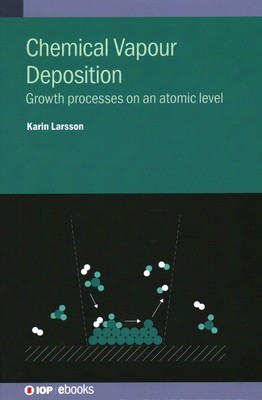
- We will send in 10–14 business days.
- Author: Karin Larsson
- Publisher: IOP Publishing Ltd
- ISBN-10: 0750331054
- ISBN-13: 9780750331050
- Format: 17.8 x 25.4 x 2.4 cm, hardcover
- Language: English
- SAVE -10% with code: EXTRA
Reviews
Description
Chemical vapour deposition (CVD) is a vacuum deposition method used to produce high-quality, high-performance, solid materials. This is the first book to cover CVD growth processes at the atomic level using a combination of theoretical and experimental tools, including density functional theory (DFT) calculations. By demonstrating the methodology behind the modelling and simulation of CVD growth processes, the text provides guidance and practical advice on how to acquire successful theoretical results. Worked examples, case studies, end-of-chapter summaries and animations of atomic-level surface processes are included to aid learning. After reading this text, researchers and students will have the knowledge they need to tailor-make desired growth processes for the deposition of materials with specific properties.
Key Features:
- Covers CVD growth processes at the atomic level using a combination of theoretical and experimental tools
- Provides the knowledge required to tailor-make desired growth processes for the deposition of materials with specific materials properties
- Covers the main principles of CVD and the growth processes of the most common types of materials
- Enables the reader to design new experimental setups, develop new materials with specific properties, interpret experimental results, and develop theoretical tools
- Includes worked examples, case studies, end-of-chapter summaries and animations of atomic-level surface processes
EXTRA 10 % discount with code: EXTRA
The promotion ends in 20d.21:28:14
The discount code is valid when purchasing from 10 €. Discounts do not stack.
- Author: Karin Larsson
- Publisher: IOP Publishing Ltd
- ISBN-10: 0750331054
- ISBN-13: 9780750331050
- Format: 17.8 x 25.4 x 2.4 cm, hardcover
- Language: English English
Chemical vapour deposition (CVD) is a vacuum deposition method used to produce high-quality, high-performance, solid materials. This is the first book to cover CVD growth processes at the atomic level using a combination of theoretical and experimental tools, including density functional theory (DFT) calculations. By demonstrating the methodology behind the modelling and simulation of CVD growth processes, the text provides guidance and practical advice on how to acquire successful theoretical results. Worked examples, case studies, end-of-chapter summaries and animations of atomic-level surface processes are included to aid learning. After reading this text, researchers and students will have the knowledge they need to tailor-make desired growth processes for the deposition of materials with specific properties.
Key Features:
- Covers CVD growth processes at the atomic level using a combination of theoretical and experimental tools
- Provides the knowledge required to tailor-make desired growth processes for the deposition of materials with specific materials properties
- Covers the main principles of CVD and the growth processes of the most common types of materials
- Enables the reader to design new experimental setups, develop new materials with specific properties, interpret experimental results, and develop theoretical tools
- Includes worked examples, case studies, end-of-chapter summaries and animations of atomic-level surface processes


Reviews